Within the Gansu province of northwestern China lies the Jiayuguan Fortress. It creates either the beginning or the end of the Great Wall (depending on which direction you started from). It was the last outpost before entering the Gobi Desert and the last outpost during the Ming Dynasty (1368 – 1644).
The fortress was built around the year 1372 and situated in between the legendary town of Kashgar to the west and Dunhuang to the east. It was a famous waypoint along the Silk Road and a prominent stop if you are travelling the historical route.
During the age of the Chinese Kingdom, the fortress protected the Western border with a fearless reputation. It is said that those exiled from the kingdom by the Emperor were ordered to head west into the vast Gobi desert and never return.
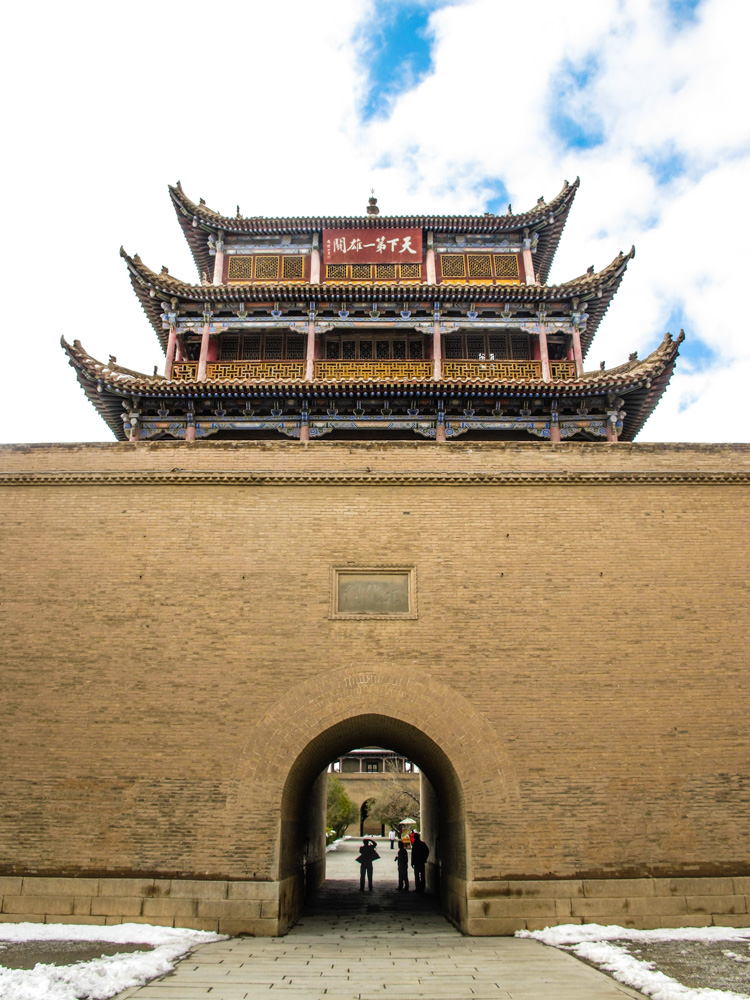
I am entering Jiayuguan Fort through the Main Entrance.
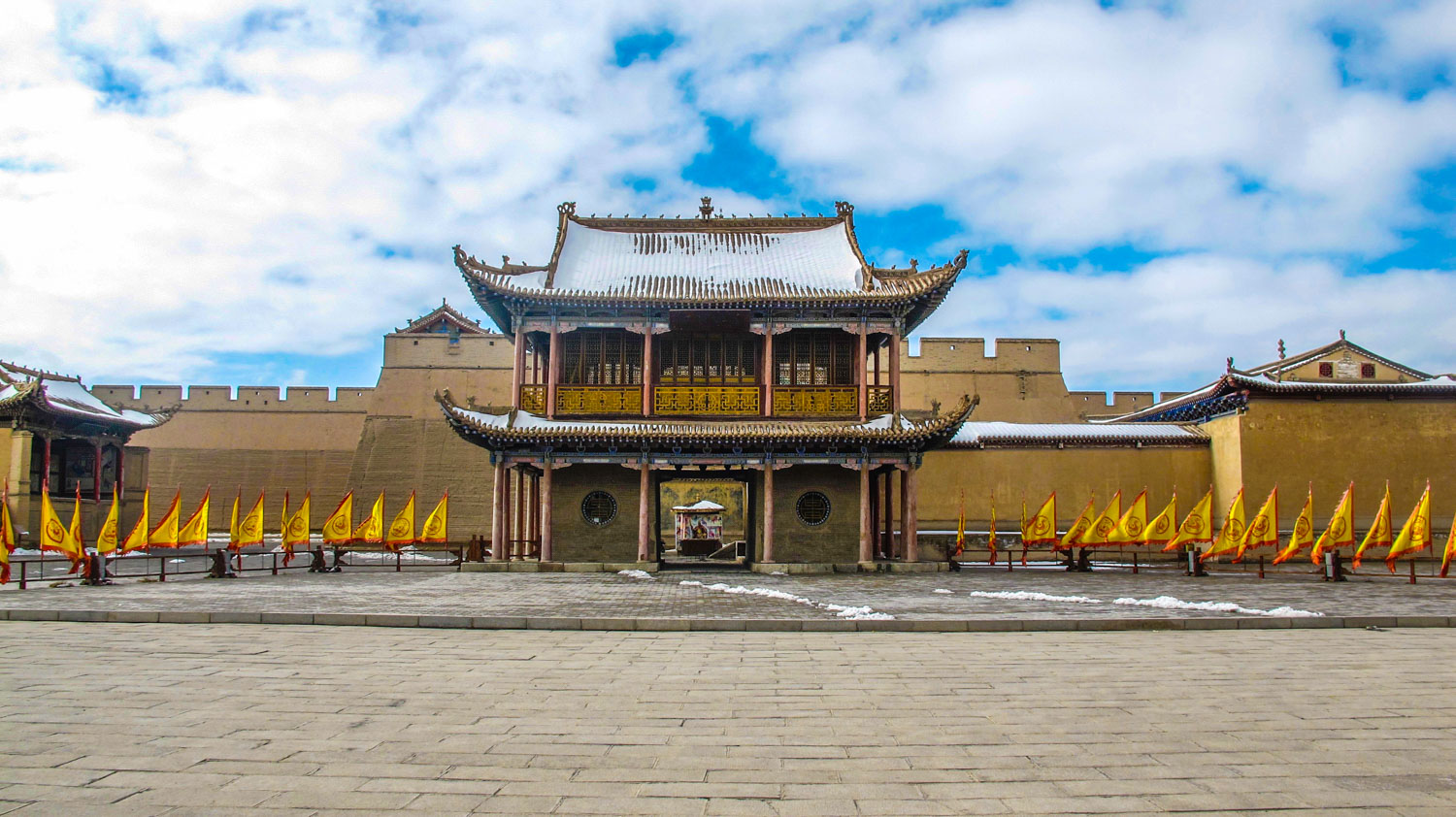
The Entrance to the “inner city” inside the fortress.
The Fortress is surrounded by an inner and outer wall. The inner wall is known as the “inner city”, is where you will find some of the fort’s most significant buildings. These include the General’s Office and Wenchang Hall – a two-story pavilion in front of the inner city,
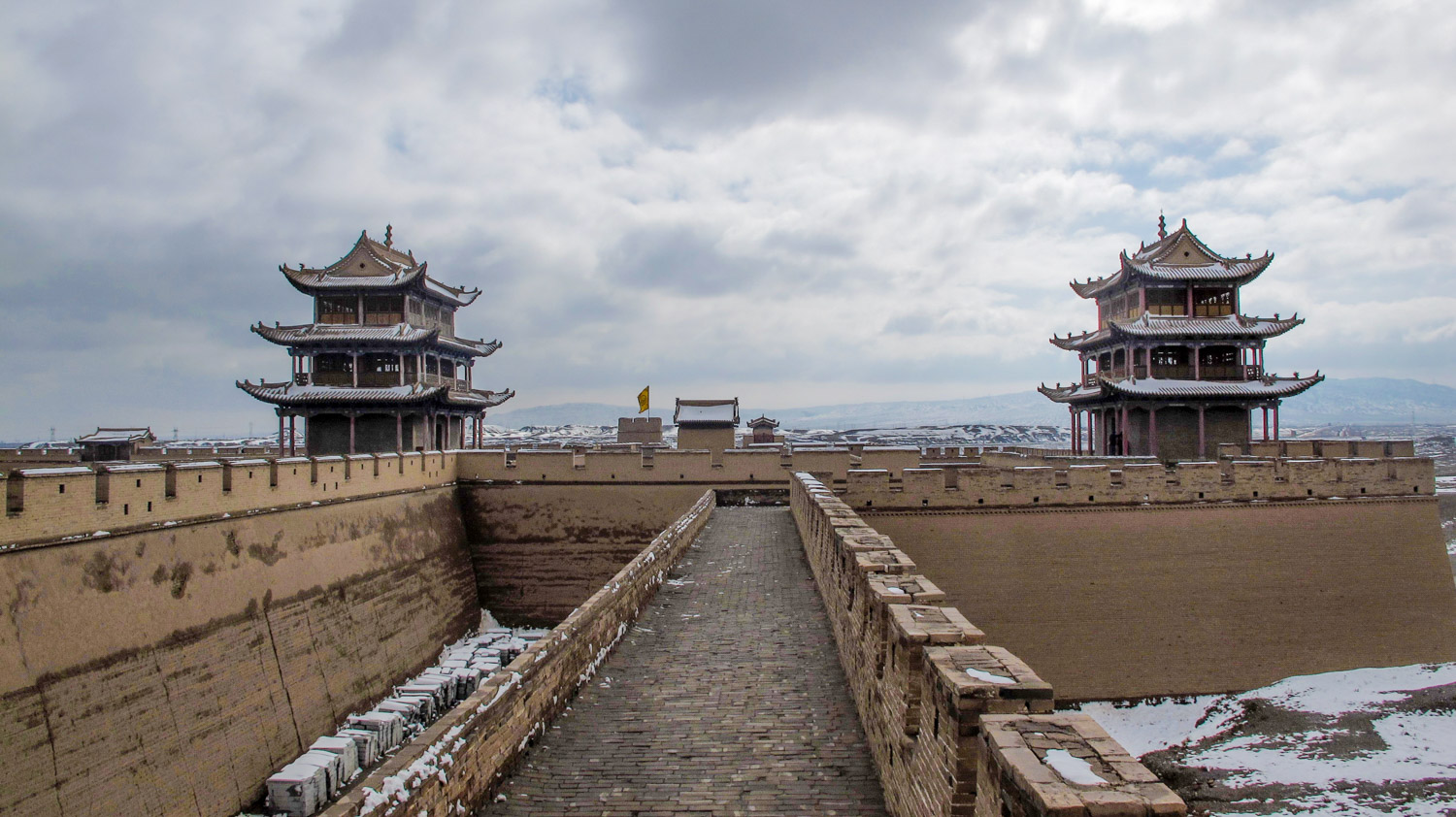
The inner and outer walls of the fortress.
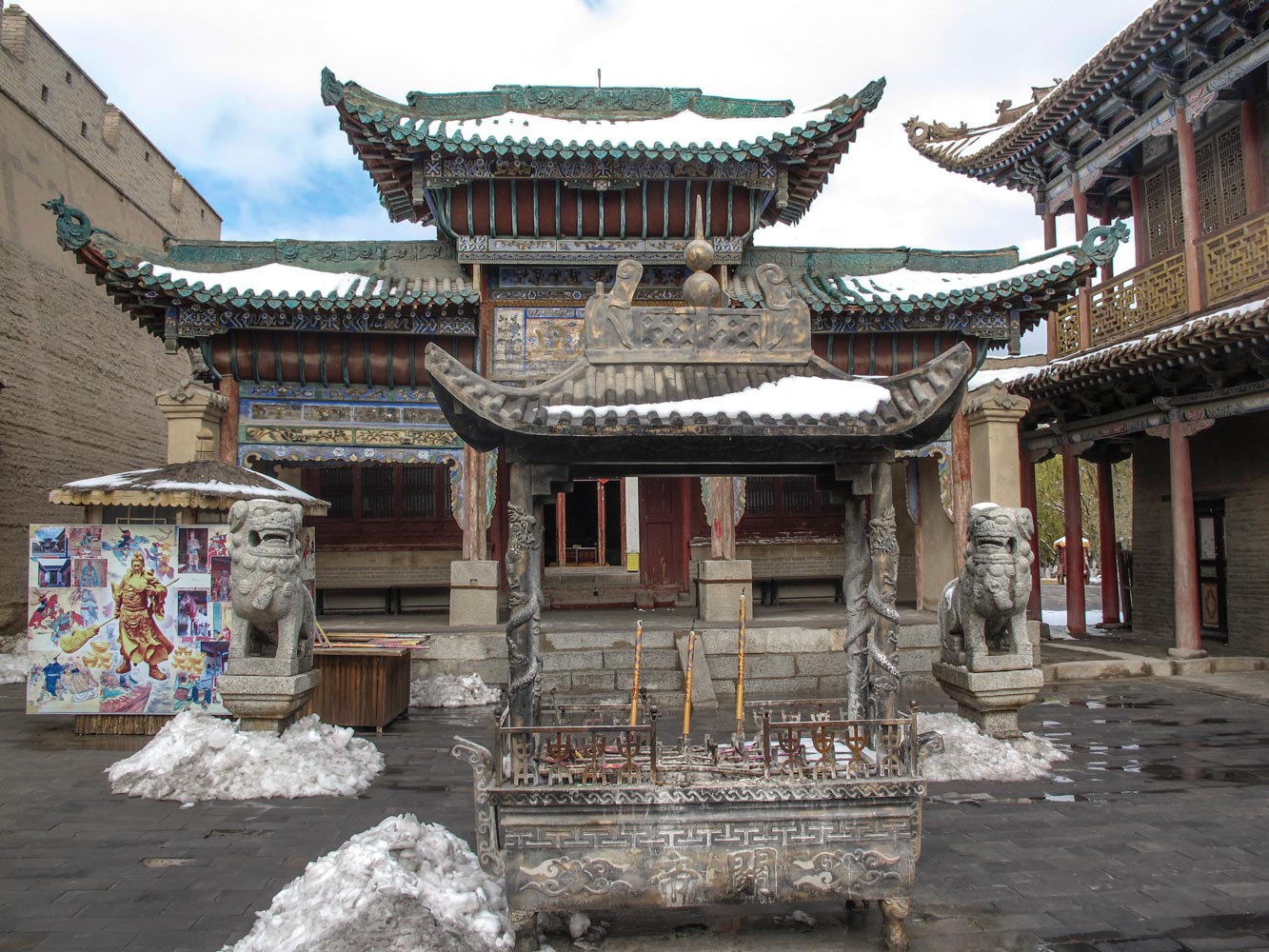
The inner temple inside the fortress.
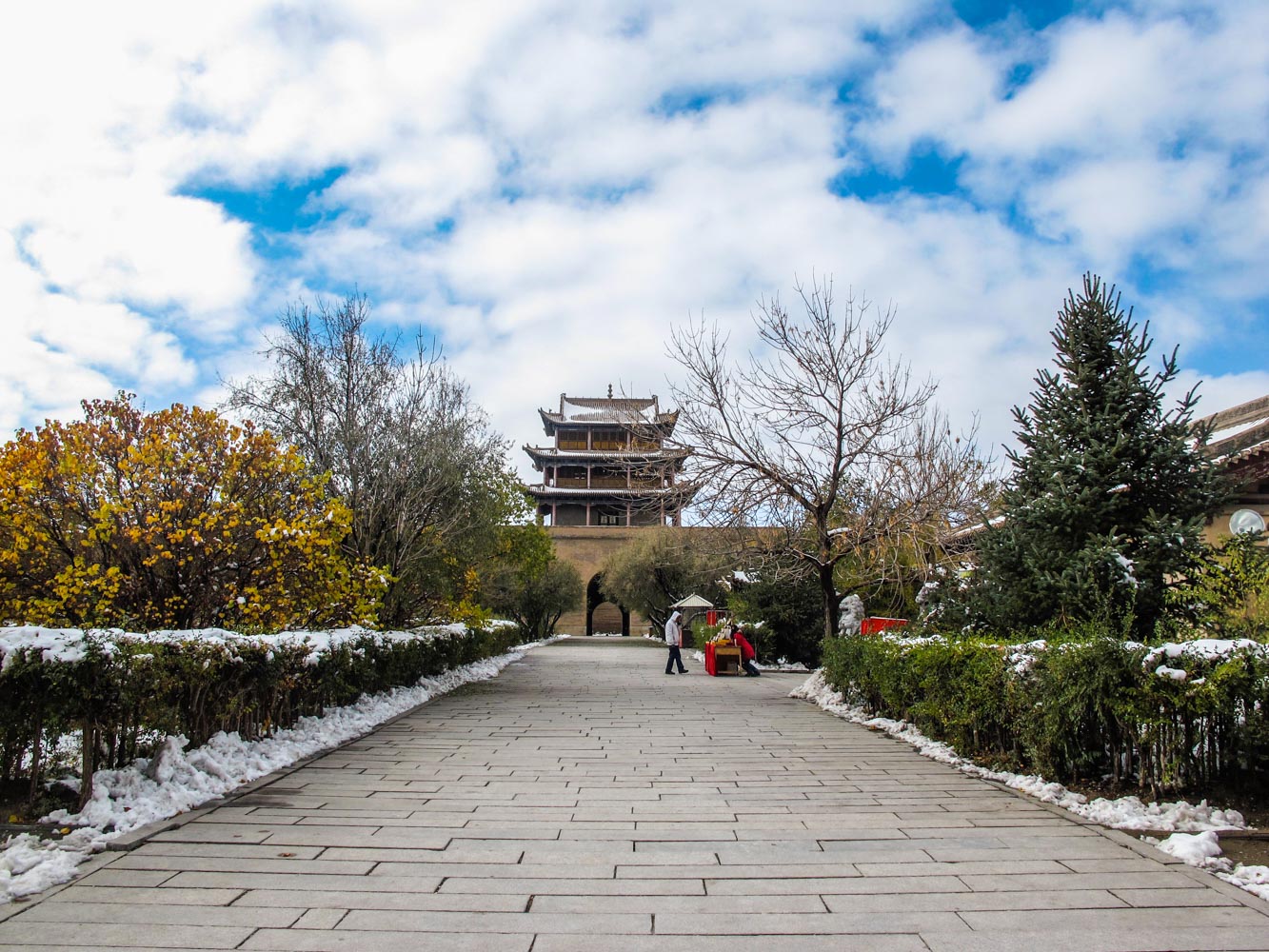
The path that leads to the inner city.
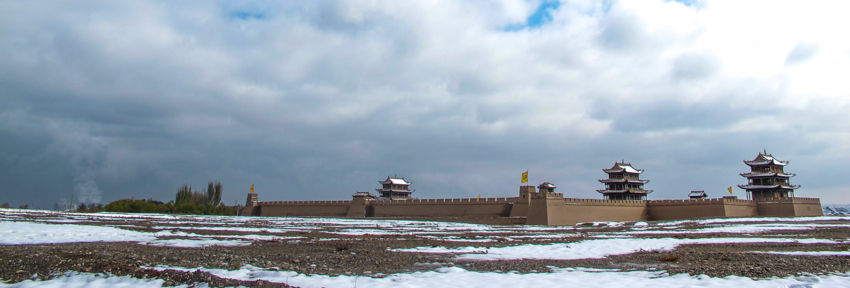
Panoramic view of the fortress.
Legends dating back to the creation of the fort state that the master architect of the fort was such a fantastic mathematician. He was so impressive, in fact, that he estimated the exact number of bricks required to be 99,999. Questioning his judgment, the Official had doubts regarding the estimation, so the designer added another brick when Jiayuguan was finished. One brick remained. Today, this iconic brick is seen on top of the Main Entrance.
Jiayuguan Fort is far from the desolated fortress it once was. It has become a very popular destination for domestic tourists (I didn’t see a single foreign tourist here) as all other historical sights in China. The history of the fort, however, lives on. Workers dress in the same antique tinfoil armour, and activities for tourists include archery, camel rides and even the chance to shoot a canon into the barren landscape surrounding the fort.
Entrance fee: May to October: 122 RMB. November to April 102 RMB.
Opening Hours: May to October 8.30 – 20.00, November to April 8.30 – 18.00.
Best Time to Visit: May to October.
Overhanging Great Wall.

The overhanging wall, and not the best wheater,
The Overhanging Great Wall is part of the Great Wall of China and located 4 miles(6.5 kilometres) northwest of the Jiayuguan Fortress. This section of the Great Wall was built on the eastern slope of the Black Mountain. The wall wasn’t visible for enemies travelling from West to East into China. Therefore, they were surprised after rounding the fortress.
As a result of its hidden location, the Overhanging Wall was an important part of the defence network of Jiayuguan Fortress, and both were built during the same dynasty. Its objective was to strengthen the defensive capability for the fort.
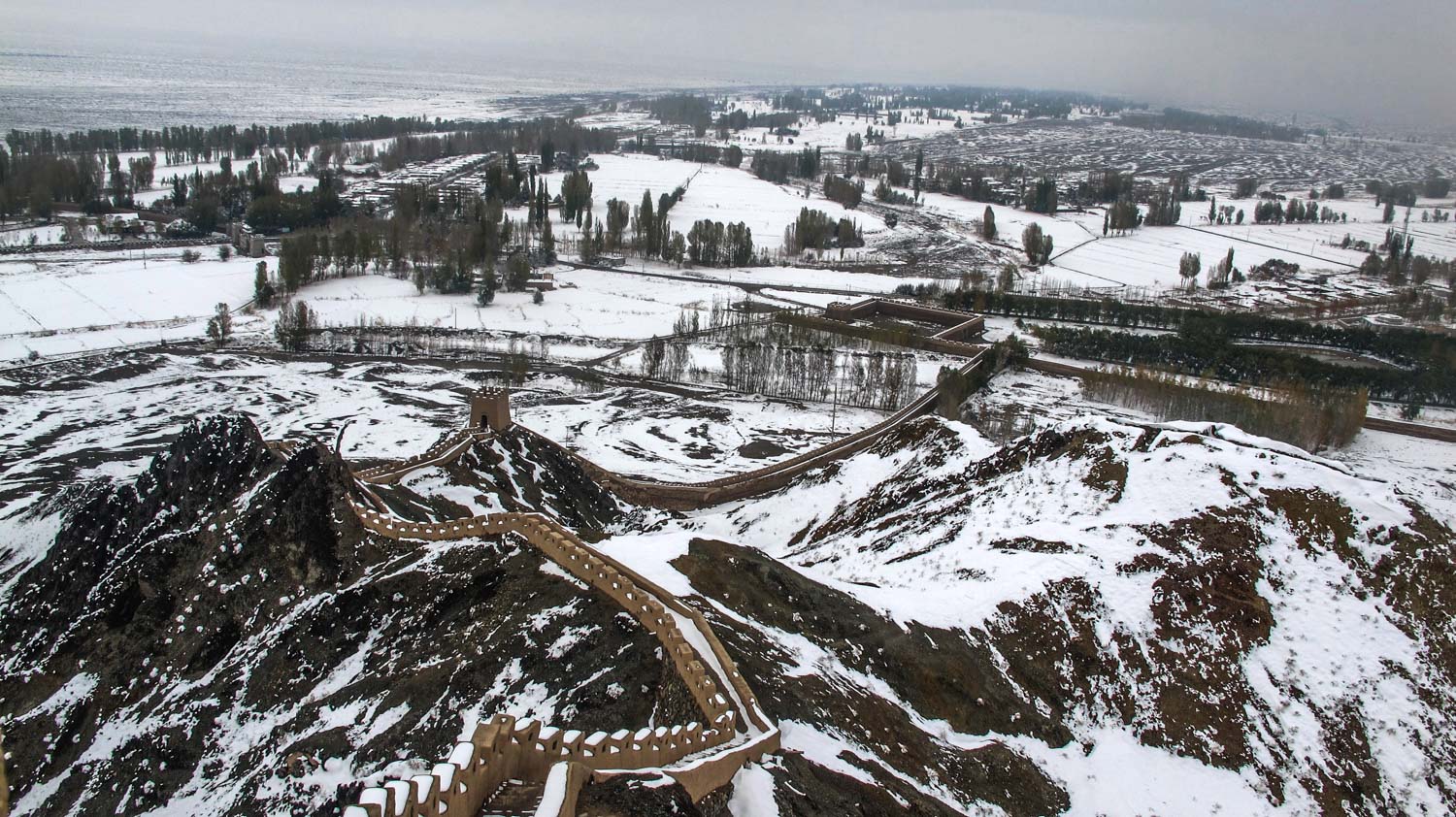
Part of the great overhanging wall.
The Overhanging Wall seems much like the rest of the Great Wall. Due to its restoration, it sadly lacks the authentic architecture. If you have already been to the Great Wall or are planning a trip, I would suggest skipping this location and finding something more worthwhile.
Entrance Fee: 31 RMB
Opening Hours: December to May 8.30 – 18.00. June to November 8.30 – 20.
Additional information about Jiayuguan.

Within the Gansu province of northwestern China lies the Jiayuguan Fortress. It creates either the beginning or the end of the Great Wall (depending on which direction you started from).
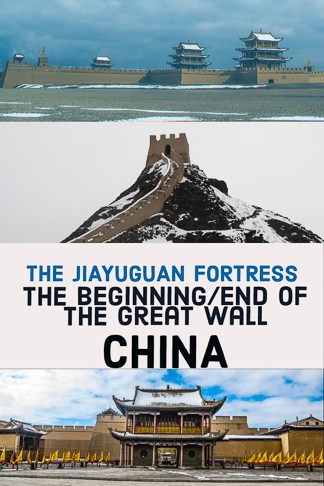
Within the Gansu province of northwestern China lies the Jiayuguan Fortress. It creates either the beginning of the end of the Great Wall (depending on which direction you started from).

Ultimate Guide: 100 Resources for Living, Working and Traveling in China
Friday 12th of May 2017
[…] Jiayuguan Fortress […]